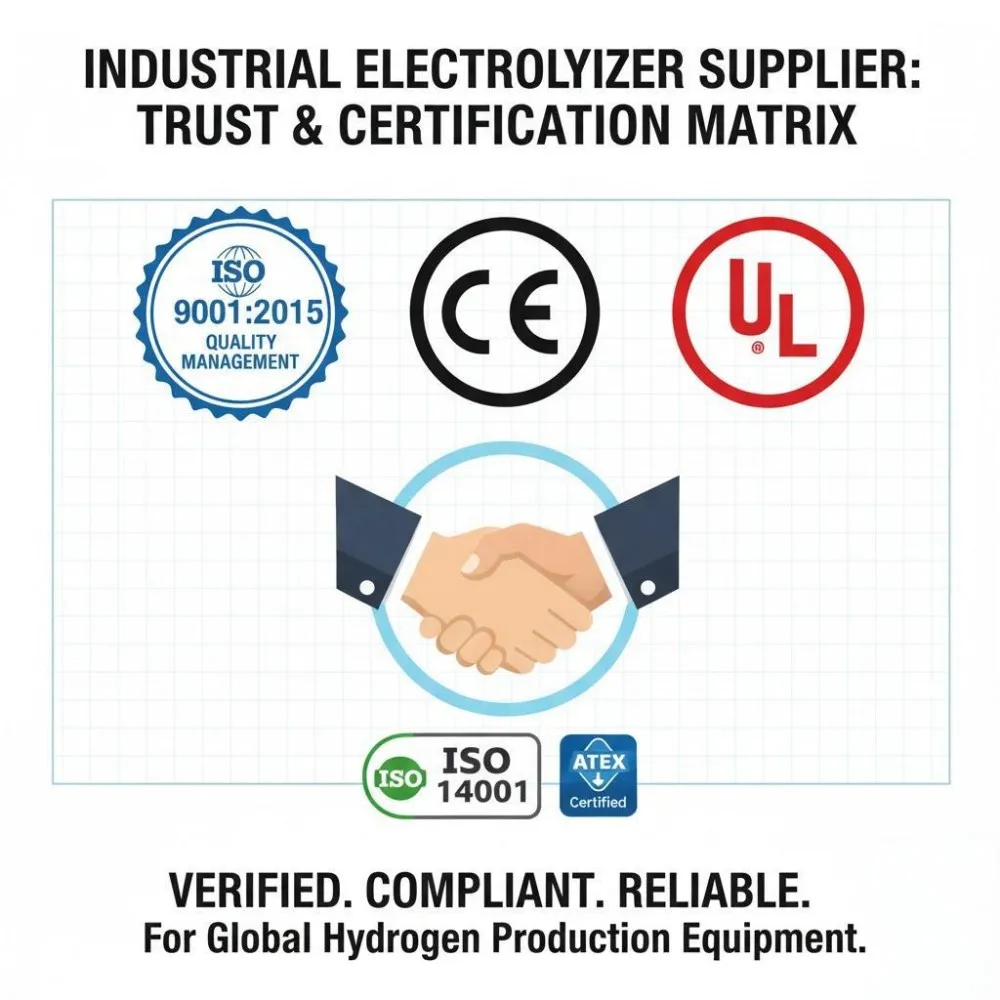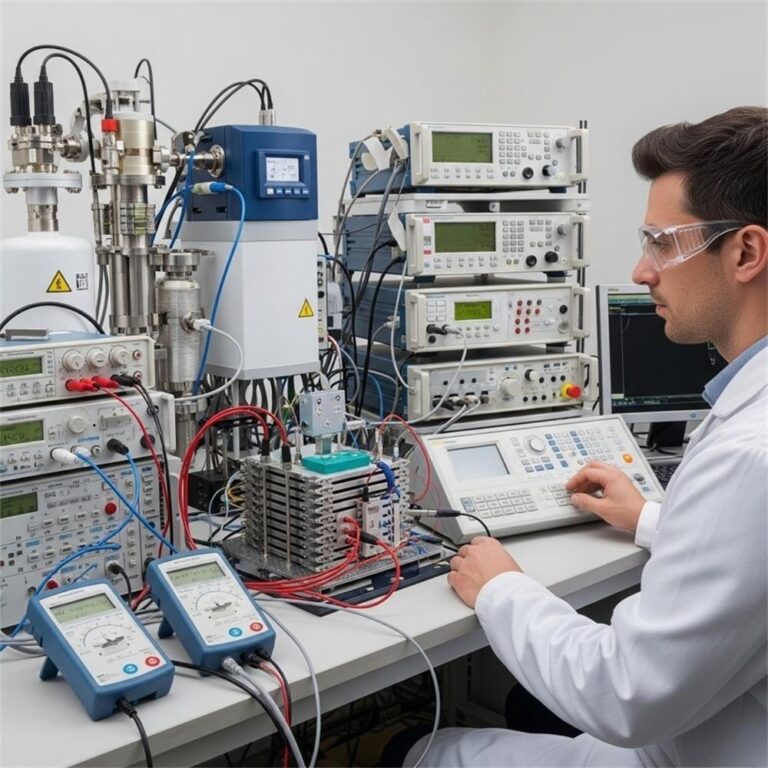Discover high purity industrial hydrogen generators delivering 99.999% purity. Ideal for semiconductors, pharmaceuticals, and electronics. Contact us for a quote!
I. Introduction: The Growing Demand for Ultra-High Purity Hydrogen
In today’s rapidly evolving industrial landscape, hydrogen plays a pivotal role across several critical applications. From enabling cleaner energy systems to acting as a foundational element in the manufacturing of high-precision components, its versatility and utility are undisputed.
One specific demand that continues to grow at a remarkable pace is the requirement for ultra-high purity hydrogen—hydrogen with a purity level of 99.999% or higher. This level of precision is not just a luxury but a necessity in fields where even microscopic impurities can compromise processes, affect product quality, or lead to regulatory non-compliance.
Industries such as semiconductor manufacturing, electronics, pharmaceuticals, and specialty chemicals are among the top users of ultra-pure hydrogen. These sectors demand exacting standards to ensure high yields, consistency, and performance, making a high purity industrial hydrogen generator an essential component of their production infrastructure.

II. Industries Requiring Ultra-High Purity Hydrogen (99.999%)
A. Semiconductor Manufacturing
Hydrogen is integral to processes like chemical vapor deposition (CVD), etching, and cleaning in semiconductor fabs. It ensures:
- Contamination-free surfaces
- Stable reaction environments
- Improved film uniformity and device performance
Impurities in hydrogen can introduce defects at the microscopic level, impacting chip functionality and yield.
B. Electronics Industry
From LCD panels to printed circuit boards (PCBs), ultra-pure hydrogen is used in:
- Reducing atmospheres
- Deoxygenation
- Surface passivation
99.999% hydrogen helps prevent corrosion and oxidation, which are fatal for the longevity and accuracy of electronic devices.
C. Pharmaceuticals
In drug synthesis and formulation, hydrogenation reactions must adhere to GMP standards. The ultra-high purity ensures:
- Non-contaminated end products
- Safe reaction pathways
- Regulatory compliance
Trace impurities could compromise the efficacy and safety of medications.
D. Specialty Chemical Production
Hydrogen is used as both a reagent and a carrier gas. For applications like producing fine chemicals and advanced polymers, high purity is vital to:
- Avoid side reactions
- Maintain product consistency
- Meet client specifications
E. Other Niche Applications
- Material Science: Used in atomic layer deposition and surface modifications.
- Research Laboratories: Experiments in controlled environments demand gas with no interfering agents.
III. Production Technologies for High Purity Industrial Hydrogen Generator (99.999%)
A. Electrolysis
Electrolysis is a clean and scalable method to generate hydrogen. Here are the main types:
1. Alkaline Electrolysis
- Well-established technology
- Uses potassium hydroxide solution as electrolyte
- Can be adapted with advanced purification units to achieve 99.999% purity
2. PEM Electrolysis
Proton Exchange Membrane (PEM) Electrolyzers offer:
- Compact design
- Fast response time
- Consistently high purity hydrogen (99.999%+)
They’re ideal for on-site industrial applications due to lower footprint and scalability.
3. AEM Electrolysis
Anion Exchange Membrane (AEM) Electrolysis is a newer innovation offering:
- Cost-effective catalyst use
- Simplified system design
- Potential for ultra-pure hydrogen with minimal post-processing
B. Steam Methane Reforming (SMR) with Purification
While SMR is a conventional large-scale hydrogen production method, it’s typically accompanied by impurities. To reach 99.999% purity:
- Pressure Swing Adsorption (PSA)
- Cryogenic purification
- Catalytic purification beds
These are layered post-processing units for achieving semiconductor-grade hydrogen.
C. Other Advanced Technologies
- Gas Separation Membranes: Use selective permeability to purify hydrogen.
- Hybrid Systems: Combine electrolysis with additional purification stages for consistent high output.
IV. Verifying and Maintaining 99.999% Hydrogen Purity
A. Analytical Techniques
Monitoring hydrogen purity is crucial. Common methods include:
| Technique | Purpose |
|---|---|
| Gas Chromatography | Detects trace hydrocarbons, CO, O₂, N₂ |
| Mass Spectrometry | Measures atomic-level impurities |
| Electrochemical Sensors | Real-time purity monitoring |
B. Quality Control Procedures
- Calibration with certified reference gases
- Scheduled system diagnostics
- Data logging and trend analysis
Maintaining a rigorous QA/QC framework is essential for uninterrupted ultra-high purity hydrogen supply.
C. Storage and Handling
To avoid recontamination:
- Use 316L stainless steel or Teflon-lined containers
- Prevent exposure to air or moisture
- Implement dedicated high-purity gas lines
Material compatibility is critical for long-term purity assurance.
V. Case Studies: Successful Implementation of Ultra-High Purity Hydrogen Generators
A. Semiconductor Manufacturing Plant
Challenge: Achieving consistent hydrogen purity across 24/7 fab operations.
Solution: Installed an on-site PEM electrolyzer system with automatic GC-based monitoring.
Result: 99.999% purity achieved, with 0.2% reduction in defect rates and improved wafer yields.
B. Pharmaceutical Company
Challenge: Hydrogenation of sensitive active pharmaceutical ingredients (APIs).
Solution: AEM electrolyzer with integrated purification bed.
Result: Reduced batch rejection, improved regulatory compliance with FDA and EU norms.
C. Electronics Component Manufacturer
Outcome: Switch to high-purity on-site hydrogen improved product shelf life and customer satisfaction ratings.
VI. Economic Analysis: Justifying the Investment in High Purity Industrial Hydrogen Generator
A. Cost Factors
| Element | Cost Estimate (USD) |
|---|---|
| Electrolyzer System | $100,000 – $500,000+ |
| Operating Cost | ~$1.50–$4.00/kg H₂ |
| Maintenance & QA | $5,000 – $15,000/year |
B. Benefits and ROI
- Zero impurity-related product recalls
- Lower waste and rework
- Faster process cycles
Companies have reported ROI within 18–24 months, especially in regulated sectors.
C. Long-Term Savings
High initial CAPEX is offset by:
- Reduced reliance on delivered hydrogen
- No transport or cylinder rental costs
- Energy-efficient operation, especially when coupled with renewables
VII. Conclusion: The Future of Ultra-High Purity Hydrogen in Industry
Ultra-high purity hydrogen isn’t just a technical requirement—it’s a strategic advantage. As industries become more precision-driven and quality-conscious, on-site generation of 99.999% hydrogen will become a standard rather than an exception.
Whether you’re in semiconductors, pharmaceuticals, or advanced manufacturing, investing in a high purity industrial hydrogen generator could be your next best strategic decision.
✅ Contact us today to learn how our hydrogen generator solutions can power your operations. Get your custom quote now!
FAQs
1. What does 99.999% hydrogen purity mean? It means the hydrogen is 99.999% pure by volume, with only 10 parts per million (ppm) of impurities—critical for high-precision applications.
2. How is hydrogen purity measured? Using tools like gas chromatography (GC), mass spectrometry (MS), and electrochemical sensors.
3. Can I produce ultra-pure hydrogen on-site? Yes, using PEM or AEM electrolyzers combined with purification stages, you can generate hydrogen at 99.999% purity.
4. Is it safe to handle high purity hydrogen? Yes, with proper systems in place for storage, monitoring, and safety controls, it’s very safe.
5. What are the running costs of a hydrogen generator? Costs vary, but average operational costs are around $1.50–$4.00 per kilogram, depending on the technology and scale.
6. Which industries need 99.999% hydrogen? Semiconductors, electronics, pharmaceuticals, specialty chemicals, and research sectors are the primary users.







